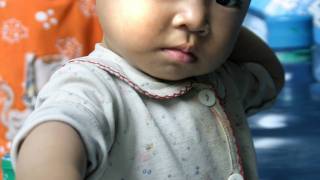Mumps on Campus During Texas State Graduation

Before attending this week’s graduation ceremonies at Texas State University, health officials are suggesting to check your mumps immunization.
This recommendation is related to the university confirming 4 Texas State students have been diagnosed with mumps.
Three of these mumps cases are related due to close contact.
Texas State University is collaborating with the Hays County Local Health Department to identify and notify other close contacts. Based on a mumps incubation period of 12-25 days, new mumps cases could develop through May 28th, 2018.
Mumps outbreaks have occurred in highly vaccinated communities, particularly in close-contact settings, such as colleges. Isolation from other people during the most infectious period is important for preventing the spread of the infection.
Moreover, individuals exposed to mumps should not return to school or work until after 5 days from onset of parotitis.
There are specific rules for the exclusion of sick children from school, as outlined in the Texas Administrative Code, specifically, Rule 97.7 for schools and Rule 746.3603 for childcare.
The mumps virus is a Rubulavirus in the Paramyxovirus family. This virus is spread by droplets of saliva or mucus from the mouth, nose, or throat of an infected person, usually when the person coughs, sneezes or talks.
Since there are no specific antiviral treatments for mumps, health officials suggest supportive care, rest and the use of pain medication for fever.
Before the mumps vaccination program started in the USA during 1967, about 186,000 cases were reported each year. Since the two-dose vaccination program was introduced in 1989, mumps cases have ranged year to year from a few hundred to several thousand.
However, in recent years, there has been an increase in the number of reported cases, from 229 cases in 2012 to 6,366 cases in 2016.
This year, from January 1 to April 21, 2018, 45 states and the District of Columbia reported mumps infections in 923 people to CDC.
In Texas, there were 4 mumps outbreaks in 2016, with 191 reported cases.
The Centers for Disease Control and Prevention (CDC) say immunization is the best way to prevent mumps infection.
Two doses of measles, mumps, and rubella (MMR) vaccine at least 28 days apart are recommended for proper immunization and have been shown to be 88% effective in preventing infection.
Although, recent studies suggest the vaccine’s immunity decreases over time.
A new study from the Harvard T.H. Chan School of Public Health school found that vaccine-derived immune protection against mumps persists an average of about 27 years after the last dose.
These researchers estimated that 25 percent of people in the U.S. vaccinated against mumps may lose protection within 7.9 years, 50 percent within 19 years, and 75 percent within 38 years.
Which means a 3rd booster shot may help sustain mumps immunization among adults.
“Knowing that protection wanes in the long term can help inform how we deploy vaccines to prevent or contain future outbreaks,” said Joseph Leonard, a postdoctoral research fellow at Harvard Chan School.
In the USA, the MMR-II and ProQuad vaccines both contain the protection for mumps.
Most pharmacies offer mumps vaccination services.
The CDC Vaccine Price List provides private sector vaccine prices for general information.
Vaccine discounts can be found here.
Vaccines, like any medicine, can have side effects, says the CDC. You are encouraged to report negative side effects of vaccines to the FDA or CDC.
Our Trust Standards: Medical Advisory Committee



























